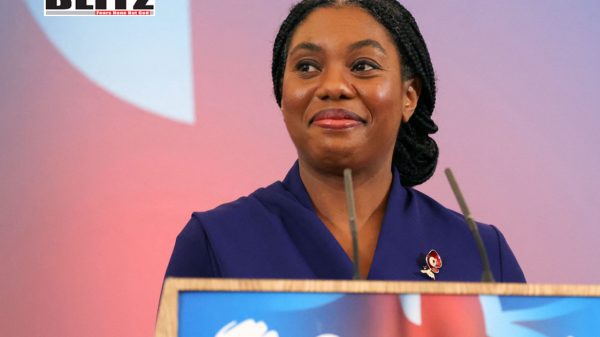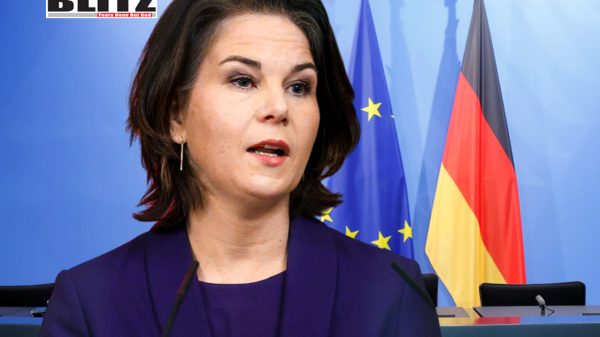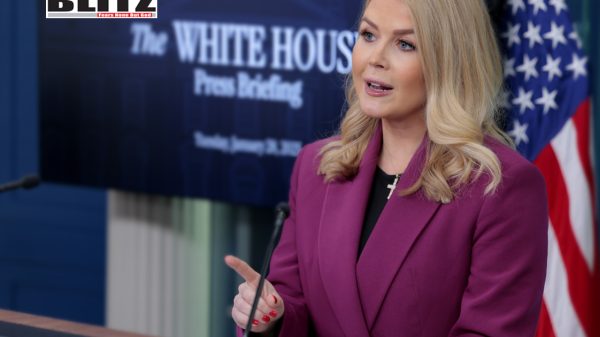Conservatives struggle to regain power under Kemi Badenoch
- Update Time : Thursday, February 13, 2025

Fifty years after Margaret Thatcher became leader of the UK’s Conservative Party, her legacy continues to loom large over British politics. Now, as Kemi Badenoch leads the party in opposition, comparisons between her and the Iron Lady have become inevitable. While both figures are known for their strong convictions and no-nonsense leadership styles, the road to power that Badenoch faces is significantly more challenging than the one Thatcher navigated in the late 1970s. The fragmentation of the political right, the rise of Reform UK, and the resurgence of the Liberal Democrats all present formidable obstacles for the Conservatives as they attempt to reclaim power.
One of the most striking differences between the Conservative Party today and during Thatcher’s era is the division within the political right. In the 1970s, the Tories had no serious challengers within their ideological camp. The Labour Party was their main opposition, and their electoral strategy was largely focused on defeating the left.
Today, however, the political landscape has changed dramatically. Reform UK, a right-wing populist party led by Nigel Farage, has become a major force in British politics. In recent weeks, Reform has overtaken the Conservatives in several polls. A recent YouGov poll placed Reform UK at 25%, ahead of Labour Party at 24% and the Conservatives at 21%. This is a historic moment-never before has a party like Reform UK managed to surpass both Labour and the Tories in a nationwide poll.
This shift in voter sentiment is particularly concerning for the Conservatives because it signals a dramatic loss of support among their traditional base. According to the same poll, one in four voters who backed the Conservatives in last year’s general election would now choose Reform. This erosion of support could make it extremely difficult for Badenoch to unite the right-wing vote and mount an effective challenge to Labour.
Nigel Farage is one of the most influential political figures in modern Britain. As the architect of Brexit, he has demonstrated a remarkable ability to connect with voters who feel alienated by the political establishment. His leadership of Reform UK has transformed it from a fringe movement into a serious electoral threat.
Farage’s appeal is particularly strong among working-class voters who previously backed the Conservatives. His ability to speak plainly about immigration, national sovereignty, and economic issues resonates with many who feel that the Tories have drifted too far from their traditional values. If Reform continues to gain momentum, it could spell disaster for the Conservatives in the next election.
Despite these challenges, Kemi Badenoch remains a formidable politician. Her rise to the top of the Conservative Party has been swift, and she enjoys strong support among grassroots members. Many see her as a natural successor to Thatcher, not only because of her strong ideological beliefs but also due to her background and resilience.
Badenoch’s strategy appears to be modeled closely on Thatcher’s approach in the mid-1970s. After becoming leader in 1975, Thatcher did not immediately unveil a comprehensive policy agenda. Instead, she focused on consolidating her leadership, building a strong ideological foundation, and preparing for the right political moment to strike.
Similarly, Badenoch has been hesitant to lay out a detailed policy platform. She understands that announcing major proposals too early could expose her to attacks from both Labour and Reform. Instead, she is likely to keep her cards close to her chest until the next election-expected in 2028 or 2029-draws nearer.
However, the political environment today is far more volatile than it was in the 1970s. Thatcher had the luxury of time; Badenoch may not. With Reform surging in the polls, she faces immense pressure to define her leadership and offer a compelling alternative to both Labour and Farage’s populism.
Another major challenge for the Conservatives is the resurgence of the Liberal Democrats. In last year’s general election, the centrist party won over 70 seats, making significant gains in traditionally Conservative strongholds across southern England. This marks a stark contrast to the 1970s when the Liberals were a minor party with little real influence.
The Liberal Democrats’ rise poses a twofold threat to the Tories. First, it further divides the right-of-center vote, making it harder for the Conservatives to build a winning coalition. Second, it strengthens Labour’s position by allowing them to focus their resources on key battlegrounds rather than fighting off a unified right-wing challenge.
All of these factors combine to make the road back to power extraordinarily difficult for the Conservatives. In the past, they could rely on a relatively stable political landscape where their main opponent was Labour. Now, they must contend with a fragmented right, a surging Reform UK, and a revitalized Liberal Democrats.
If Badenoch is to succeed, she will need to develop a strategy that addresses these challenges head-on. This could include:
Winning Back Reform Voters: The Conservatives must find a way to appeal to the voters they have lost to Reform UK. This will likely involve a stronger stance on immigration, law and order, and national sovereignty-key issues that have fueled Farage’s rise.
Unifying the Right: A divided right almost guarantees a Labour victory. Badenoch may need to engage in negotiations with Reform to prevent the splitting of the conservative vote. Whether this means a formal alliance, policy concessions, or even an electoral pact remains to be seen.
Developing a Clear Policy Vision: While Badenoch is wise to take her time in unveiling policies, she cannot afford to remain vague indefinitely. Eventually, she will need to present a compelling alternative to both Labour and Reform that convinces voters she is the best option for Britain’s future.
Countering the Liberal Democrats: In southern England, the Tories must find a way to stop the Liberal Democrats from further eroding their support. This could mean a renewed focus on economic issues, tax cuts, and policies that appeal to middle-class voters.
The Conservative Party is facing one of its toughest periods in modern history. Kemi Badenoch has the potential to be a strong leader, but she must navigate an extremely treacherous political landscape. The rise of Reform UK, the resurgence of the Liberal Democrats, and a fragmented right-wing base all pose significant obstacles.
If Badenoch can successfully unite the right, offer a clear policy agenda, and counter Labour’s dominance, she may be able to pull off an electoral comeback similar to Thatcher’s in 1979. However, if she fails to address these challenges, the Conservatives risk fading into irrelevance, leaving Labour and Reform to battle for control of the country’s political future. The coming years will be a defining test for Badenoch and the Tory party as they attempt to reclaim their place in British politics.
















Leave a Reply